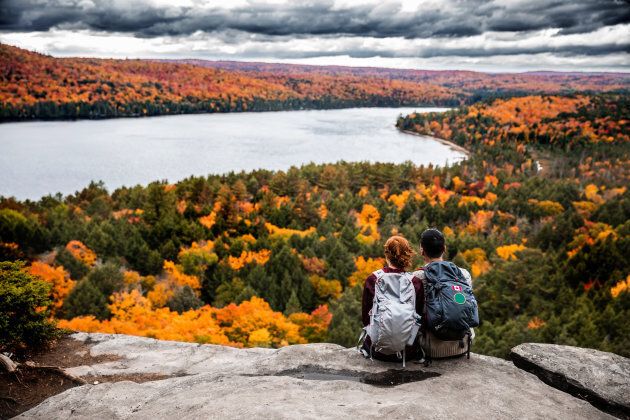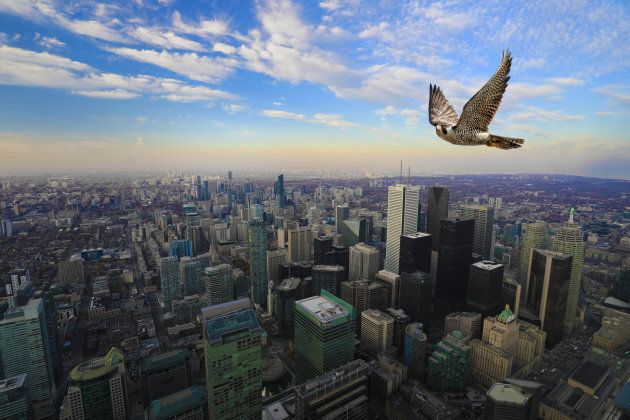Nature conservation can seem like a long and arduous journey. Current issues, from climate change to protecting North Atlantic right whales, can seem overwhelming. But our history should give us hope. Many young people today are unaware about ozone depletion or pollution that once caused the egg shells of wild birds to thin and crack. These were once big, complex political conservation issues, but thanks to past efforts, we have moved from problem to solution.
Here are 10 stories of hope in 2017 from Canada and around the world that highlight our progress in protecting nature.
Protected areas continues to grow
Many countries are edging closer to international targets to protect 17 per cent of lands and inland waters by 2020. Globally, the amount of protected area has just reached 15 per cent, and in Canada it has grown by 8 per cent in the last five years, to 10.6 per cent. The Natural Areas Conservation Program, supported by Environment and Climate Change Canada, and administered by the Nature Conservancy of Canada (NCC), celebrated its 10 year mark, and has now protected over one million acres, including some of Canada's most threatened species and habitats.

Meeting commitments for marine protected areas
While Canada's protection of marine and coastal areas had flat-lined for many years, there has been a flurry of new protected areas, resulting in Canada achieving its interim goal of protecting 5 per cent of our oceans and coasts by 2017, with a goal of 10 per cent by 2020. In June, it was announced that the world is on track to meet the goal of protecting 10 per cent of marine areas and coasts. One of the most significant new announcements is that Mexico tripled the area of its marine protected areas to include 23 per cent of its national waters, including the new Revillagigedo Marine Reserve, the largest marine protected area in North America.
Recovering recover endangered wildlife in Canada
The peregrine falcon was once one of the poster species for Canada's endangered species. Today, thanks to a DDT phase-out, and reintroduction programs, I rarely go a few weeks without seeing a peregrine falcon. In 2017, the peregrine falcon subspecies that lives throughout most of Canada was assessed as not at risk by the Committee on the Status on Endangered Wildlife in Canada, and joins a growing list of recovered species.

Overwhelming support for protected areas in Canada
Nature conservation ultimately fails if it's not supported by people. Canadians have a long history of parks, protected areas and wildlife conservation, so it's no surprise that a 2017 poll found that the 89 per cent of Canadians support protected areas, and 79 per cent said they would support increased federal funding for the creation of new parks and protected areas.
Evidence that nature is good for you
Medical science is providing more evidence that people greatly benefit from spending time in nature, and this evidence is receiving increasing attention. The link between nature and health is not only being advanced by conservation organizations, but also by groups such as the World Economic Forum. Human health will be an important driver for conservation. The more recognition that nature conservation benefits everyone, the more support we'll have for conservation.
Banning commercial fishing in the high Arctic
Climate change is altering the Arctic faster than any other place on Earth. The loss of sea ice will create huge areas of open water, making Arctic fish susceptible to unsustainable commercial harvest. In 2017, nine countries agreed to ban commercial fishing in three million square kilometres of offshore waters in the Arctic Ocean. The ban will last for at least 16 years while scientists study the potential impacts on the marine ecosystem.

Sharing conservation information
In 2017, iNaturalist, an app used to share information about species observations, surpassed five million observations and introduced new image recognition software that suggests species identity. Technology can certainly distract us from nature, but it can also be a catalyst for discovery and collaboration. Through iNaturalist, your observations can become part of our global record on biodiversity and help inform conservation decision-making.
Integrating business leaders and biodiversity
Not so long ago, it seemed like the environment and economy were pitted against each other, but there is increasing recognition of the benefits of integrating economy and ecology. In 2017, TD Bank and NCC released a report on the natural capital values of conserved forests that assigns a value to the ecosystem services that forests provide to Canadians. CEOs and leaders from the Smart Prosperity Institute also released a call to Stand up for Nature and increase our investment in conservation.
More from HuffPost Canada:
- B.C. Bans Trophy Hunting Grizzly Bears
- Canada's Biodiversity Can Change The World
- Progress In Canada's Boreal Forest Shows We Can Protect Half Of Nature
Shrinking the ozone hole
In the early 1990s, Time Magazinewarned that "serious atmospheric ozone depletion has spread from the polar regions to temperate climes ― and is worse than anyone thought." We're not in the clear yet, but we have made significant progress. The Montreal Protocol on Substances that Deplete the Ozone Layer was signed 30 years ago. As a result, the hole in the ozone layer is shrinking and scientists expect the Antarctic ozone hole to recover back to 1980 levels by around 2070. These efforts should provide us with hope that collectively we can reduce atmospheric pollution.
Continued progress on climate change
China, the world's largest carbon emitter, announced a new carbon market, and Canada's pricing on carbon pollution is moving ahead. New research in 2017 highlighted the importance of natural climate change solutions, such as reforestation, and protecting wetlands, grasslands and forests. There is increasing recognition that nature can help mitigate some of the impacts of climate change by providing services, such as holding flood waters and protecting coastal communities from storm surges.
This post was written by Dan Kraus and originally appeared on the Nature Conservancy of Canada's blog, Land Lines.
Follow HuffPost Canada Blogs on Facebook
Also on HuffPost: